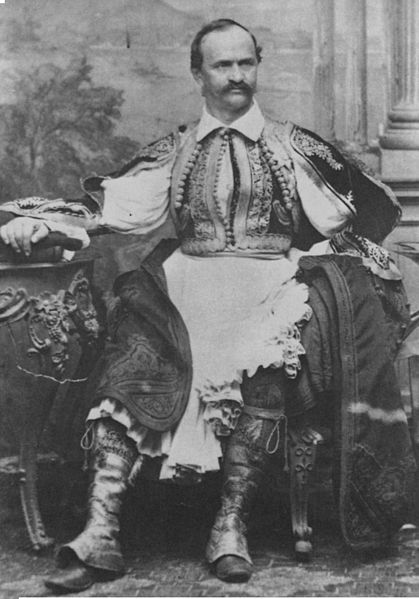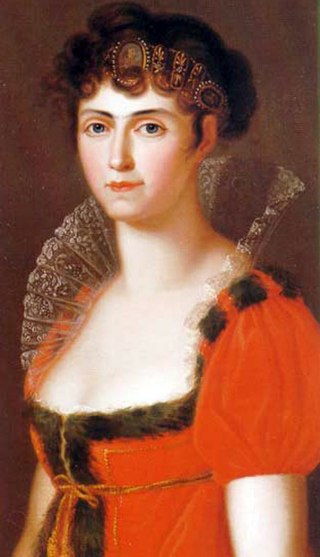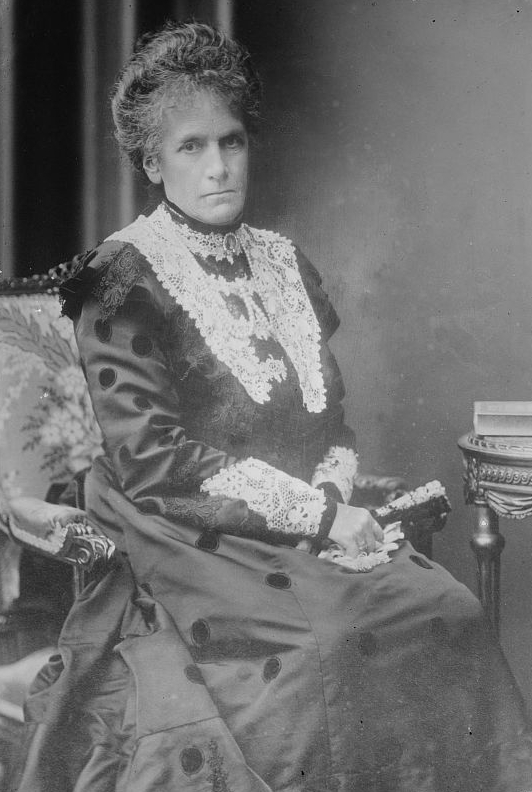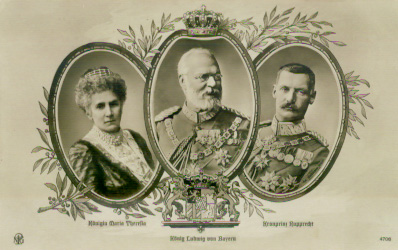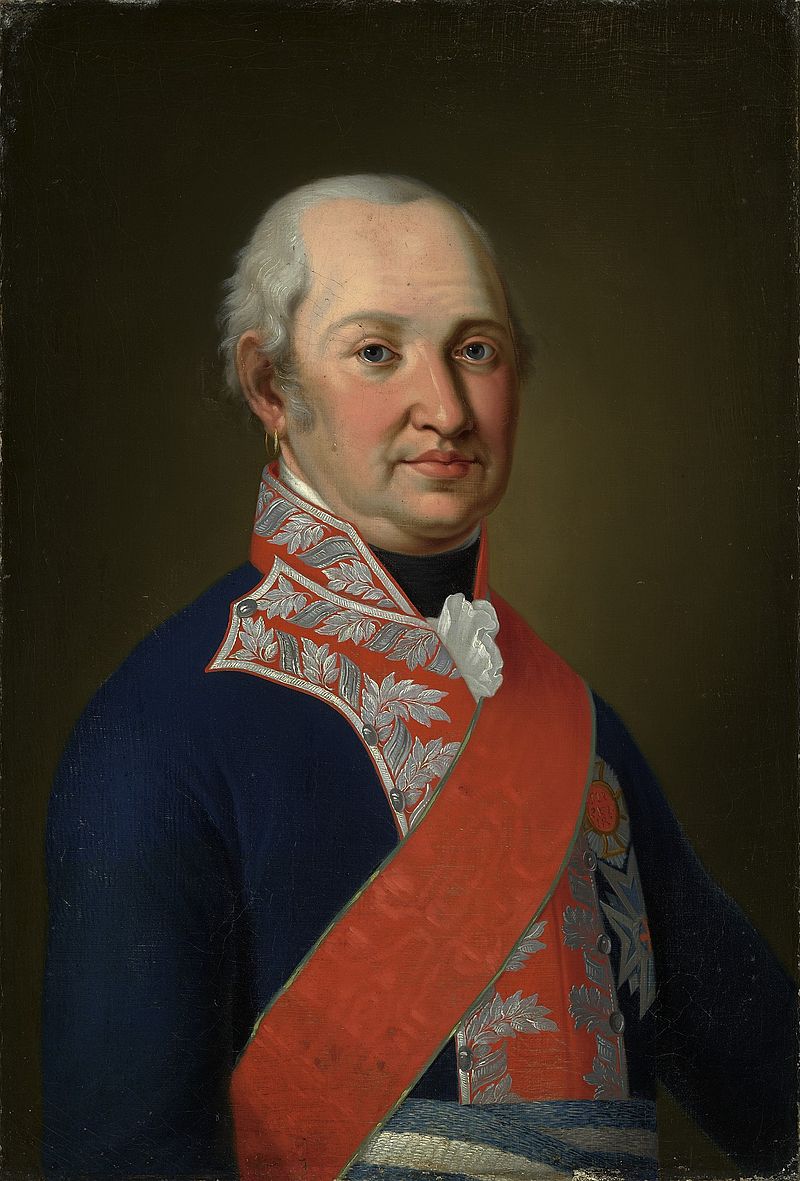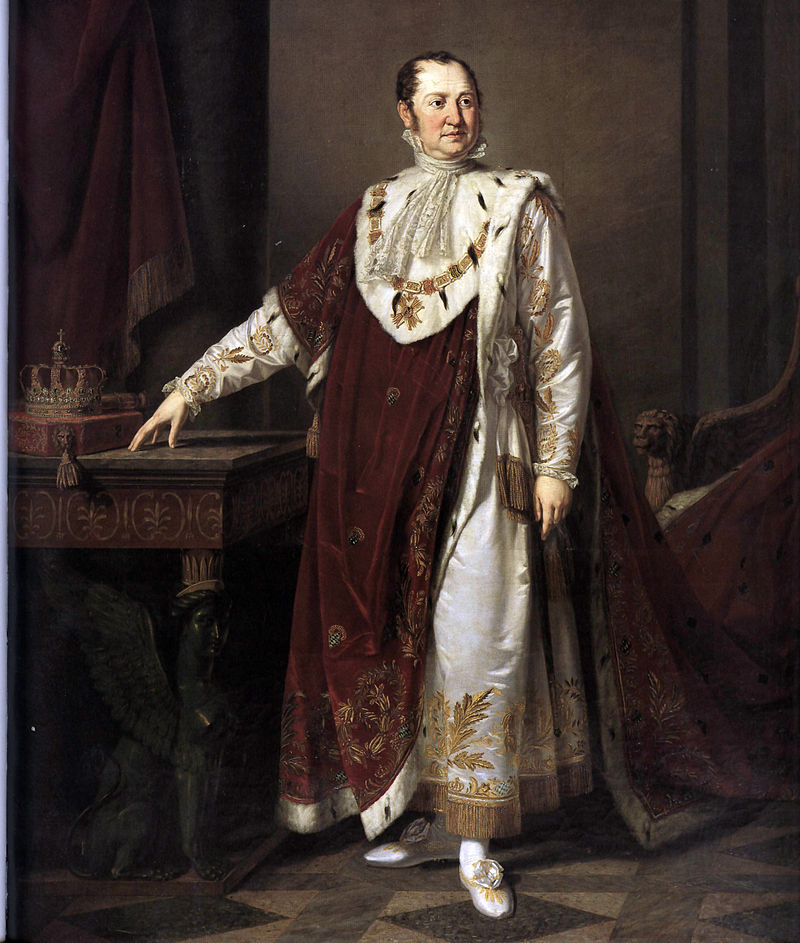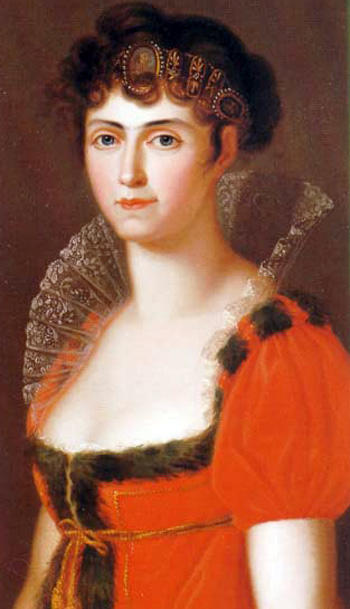by Susan Flantzer © Unofficial Royalty 2016

Photo Credit – Wikipedia
Elisabeth Amalie Eugenie, Duchess in Bavaria, known as Sisi, was born on December 24, 1837, at Herzog-Max-Palais (Duke Max Palace) in Munich, Kingdom of Bavaria, now in Bavaria, Germany. Today the palace is the Munich headquarters of the Deutsche Bundesbank, formerly the State Central Bank of Bavaria, and there is a plaque on the building commemorating Sisi’s birth.

Plaque on the Deutsche Bundesbank in Munich commemorating the birth of Elisabeth, Empress of Austria; Photo Credit – © Susan Flantzer
Sisi’s father was Maximilian Joseph, Duke in Bavaria, from a junior branch of the House of Wittelsbach. Maximilian Joseph did much to promote Bavarian folk music. He played the zither, which is the national instrument of Bavaria, and composed music for it.

Maximilian Joseph, Duke in Bavaria playing the zither; Credit – Wikipedia
Sisi’s mother was Princess Ludovika of Bavaria, the daughter of Maximilian I Joseph, King of Bavaria and his second wife Caroline of Baden.

Ludovika of Bavaria; Credit – Wikipedia
Although the family had a home in Munich, Herzog-Max-Palais (Duke Max Palace), Sisi’s parents had no obligations with the Bavarian royal court and their nine children spent much time living a carefree, unstructured, unrestrained childhood at Schloss Possenhofen on Lake Starnberg. Sisi had a close relationship with her father, and he allowed her to stay away from classes to spend time with him. Her hobbies included horseback riding, drawing, and writing poems.

Equestrian portrait of Sisi at Schloss Possenhofen, 1853; Credit – Wikipedia
Sisi’s eight siblings:
- Ludwig Wilhelm, Duke in Bavaria (1831 – 1920), married morganatically Henriette Mendel, Baroness von Wallersee, had issue
- Wilhelm Karl, Duke in Bavaria (1832 – 1833), died in childhood
- Helene, Duchess in Bavaria (1834 – 1890), married Maximilian Anton Lamoral, Hereditary Prince of Thurn and Taxis, had issue
- Karl-Theodor, Duke in Bavaria (1839 – 1909), married (1) Sophie of Saxony, had issue (2) Maria Josepha de Bragança of Portugal, had issue including Elisabeth, wife of Albert I, King of the Belgians
- Marie Sophie, Duchess in Bavaria (1841 – 1925), married King Francesco II of the Two Sicilies, had a daughter who died in infancy
- Mathilde Ludovika, Duchess in Bavaria, (1843 – 1925), married Prince Lodovico of Bourbon-Two Sicilies, Count of Trani, had issue
- Sophie Charlotte, Duchess in Bavaria (1847 – 1897), married Ferdinand Philippe Marie, duc d’Alençon, had issue
- Maximilian Emanuel, Duke in Bavaria (1849 – 1893), married Princess Amalie of Saxe-Coburg and Gotha, had issue
The painting below is a group portrait of Sisi’s siblings given to her by her brother Karl Theodor on the occasion of her wedding.

(left to right) Sophie, Maximilian Emanuel, Karl Theodor, Helene, Ludwig Wilhelm, Mathilde and Marie; Credit – Wikipedia
In 1848, Emperor Ferdinand of Austria abdicated and his 18-year-old nephew Franz Joseph succeeded him. The feeling in the Imperial Court was that the young emperor should marry and produce heirs as soon as possible. Franz Joseph’s domineering mother, Princess Sophie of Bavaria was the sister of Sisi’s mother. Sophie considered several princesses as the future empress, however, Sophie wanted to forge a relationship with her familial House of Wittelsbach of Bavaria and the House of Habsburg-Lorraine. She arranged for a match between Franz Joseph and Helene, Duchess in Bavaria, Sisi’s eldest sister. In 1853, Helene traveled with her mother and her younger sister Sisi to the resort of Bad Ischl, Upper Austria to meet her first cousin Franz Joseph with the hopes that she would become his bride. Instead, Franz Joseph fell in love with the 15-year-old Sisi. Franz Joseph told his mother that if he could not marry Sisi, he would not marry at all. Five days later their engagement was officially announced.

Franz Joseph in 1853; Credit – Wikipedia

Sisi in 1855; Credit – Wikipedia
Franz Joseph and Sisi were married at 4 PM on April 24, 1854, at the Augustinerkirche, the parish church of the Imperial Court of the Habsburgs, a short walk from Hofburg Palace in Vienna, Austria. It had taken an hour for the wedding procession to walk through the palace corridors and courtyards and down the street to the church. The ceremony was conducted by Cardinal Joseph Othmar Rauscher, Archbishop of Vienna with 1,000 guests in attendance including 70 bishops.

Wedding of Franz Joseph and Sisi; Credit – Wikipedia
Sisi, who had been brought up in a relaxed atmosphere, was bored and tired after the wedding, but her duties were not yet done. After the wedding, the newlyweds proceeded down a 50-yard carpet back to the Hofburg Palace where for two hours they received their wedding guests. When dinner was finally served at 10 PM, Sisi had no appetite. The strict and formal reality of the Habsburg court’s protocol had astonished her. When her family left Vienna to return to Bavaria, Sisi’s father told her that he could not tolerate the Vienna court etiquette and that she would have to visit him at Schloss Possenhofen. Her sister Helene expressed her relief that Franz Joseph had not chosen her as his bride.
The couple had four children:
- Archduchess Sophie (1855 – 1857), died in childhood
- Archduchess Gisela (1856 – 1932), married Prince Leopold of Bavaria, had issue
- Crown Prince Rudolf (1858 – 1889), married Princess Stephanie of Belgium, had issue
- Archduchess Marie Valerie (1868 – 1924), married Archduke Franz Salvator, Prince of Tuscany, had issue
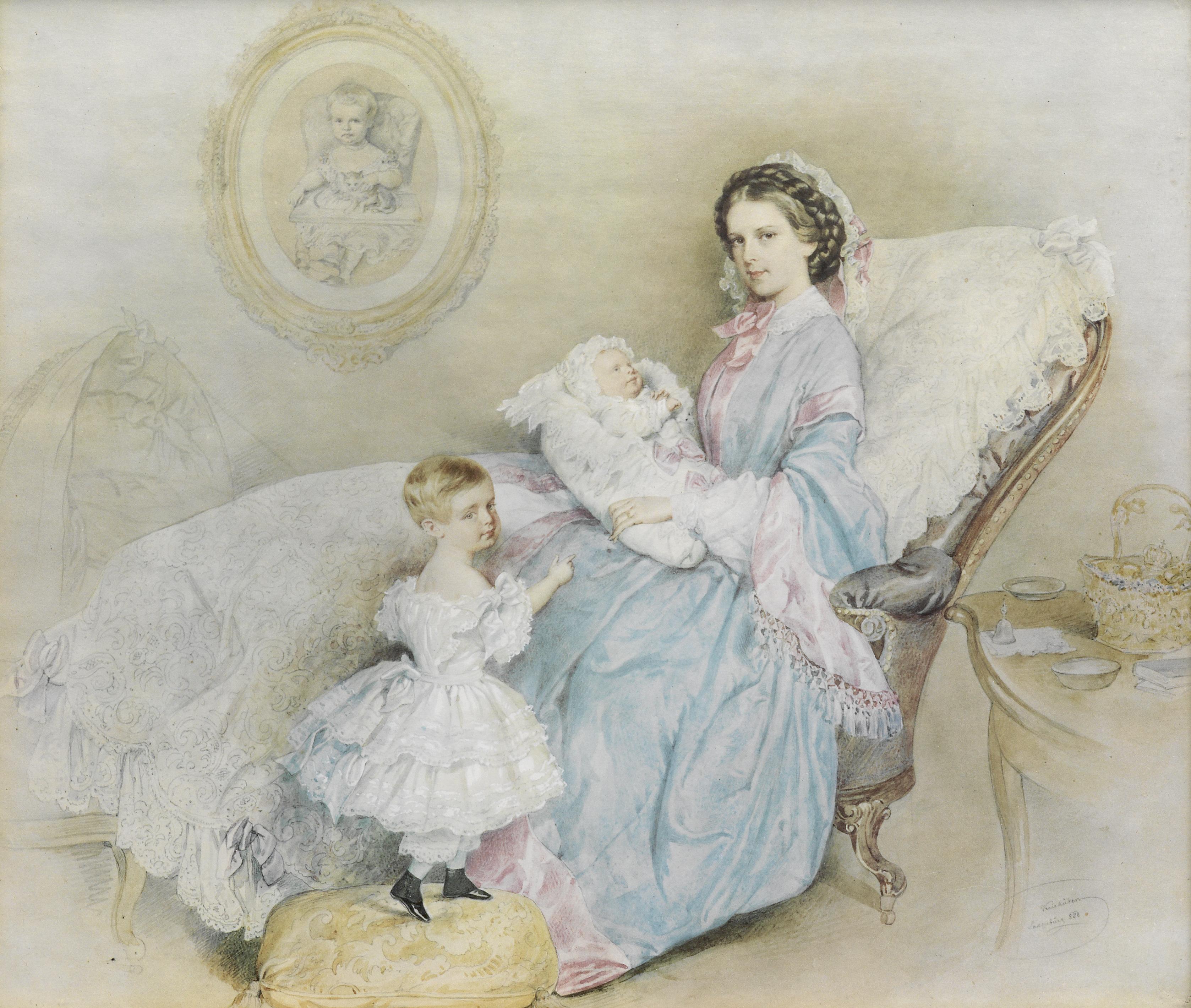
Sisi with her two eldest surviving children, Gisela and Rudolf in 1858; Credit – Wikipedia

Sisi’s youngest child, Marie Valerie in 1870; Credit – Wikipedia
The marriage was not a happy one for Sisi. Although her husband loved her, Sisi had difficulties adjusting to the Austrian court and did not get along with Imperial family members, especially her mother-in-law. Sisi felt emotionally distant from her husband and fled from him as well as her duties at court, by frequent traveling. In 1885, Franz Joseph began a long-standing private relationship with actress Katharina Schratt that would last the rest of his life. The exact nature of their relationship is unclear. Some believe that Katharina and Franz Joseph were lovers while others believe that their relationship was platonic. Katharina always maintained the strictest discretion regarding her relationship with Franz Joseph. Sisi tolerated the relationship and even seemed to encourage it.

Empress Elisabeth of Austria in Courtly Gala Dress with Diamond Stars by Franz Xaver Winterhalter, 1865; Credit – Wikipedia
In 1860, Sisi suffered from severe coughing. The diagnosis of lung disease and the recommendation of a cure in Madeira, Portugal was used by Sisi as a pretext to escape from court life and take her first trip alone away from Vienna. When Sisi returned to Vienna, she suffered a severe relapse. The doctors diagnosed pulmonary consumption and Sisi escaped to the Greek island of Corfu in the Ionian Sea. Sisi quite liked Corfu and in 1889-1891, she had the Achilleion Palace built there. Sisi’s travels to escape life at court continued for the rest of her life.
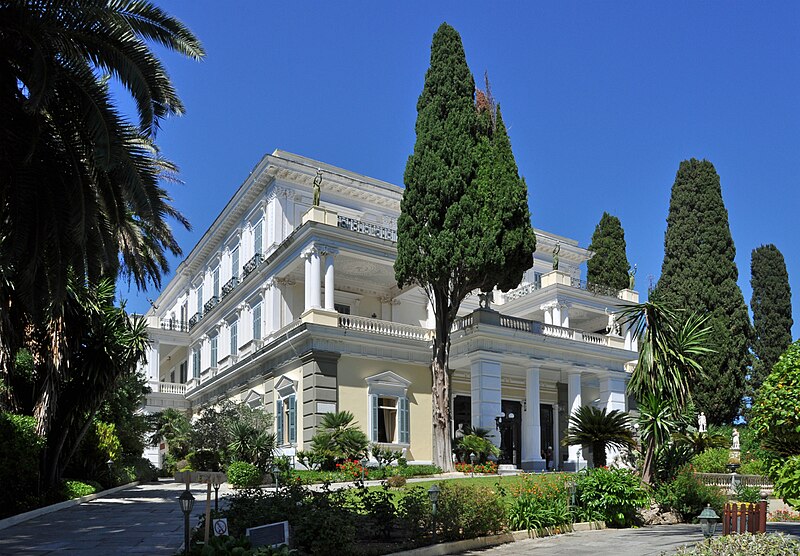
Achilleion Palace in Corfu, Greece; By Marc Ryckaert (MJJR) – Own work, CC BY 3.0, https://commons.wikimedia.org/w/index.php?curid=23107846
Sisi had very rigorous exercise habits. Besides riding every day for hours, she had a gymnasium with wall bars, a high bar, and rings in the frame of a door. When she was in her 40s, Sisi began to suffer from sciatica and could not ride anymore. She then increased her gymnastic routines and began fencing lessons. In addition, she took long walks, sometimes walking 20 miles a day.
Franz Joseph kept his heir Crown Prince Rudolf away from all state affairs. Under pressure from his father, Rudolf married Princess Stephanie of Belgium, daughter of King Leopold II of the Belgians. The couple had one child, Elisabeth Marie. On January 30, 1889, at Mayerling, a hunting lodge in the Vienna Woods which Rudolf had purchased, in an apparent suicide plot, Rudolf shot his 17-year-old mistress Baroness Mary Vetsera and then shot himself. Crown Prince Rudolf had no sons, so the succession would pass to Emperor Franz Joseph’s brother, Archduke Karl Ludwig and his eldest son, Archduke Franz Ferdinand. In a matter of days, Archduke Karl Ludwig renounced his succession rights in favor of his son Archduke Franz Ferdinand, whose assassination in 1914 sparked World War I.
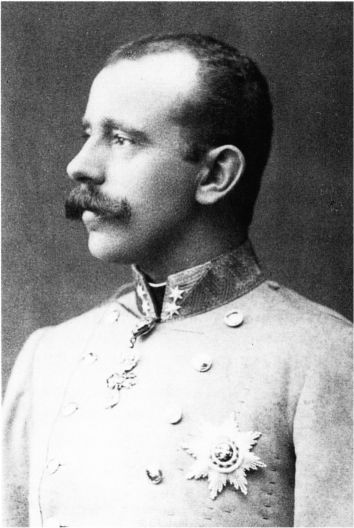
Crown Prince Rudolf; Photo Credit – Wikipedia
After Rudolf’s death, Sisi spent little time with her husband, preferring to travel. However, a warm and friendly correspondence between the couple existed. In 1898, despite being warned about possible assassination attempts, Sisi traveled incognito to Geneva, Switzerland. She stayed at the Hotel Beau-Rivage, where she enjoyed a meal of timbale de volaille, crème glacèe à l’Hongroise, and iced champagne. She asked her lady-in-waiting Irma, Countess Sztáray to send the menu to Franz Joseph because she had enjoyed the meal so much. Afterward, Sisi visited the aviaries, aquarium, and conservatories, and bought presents for her grandchildren.
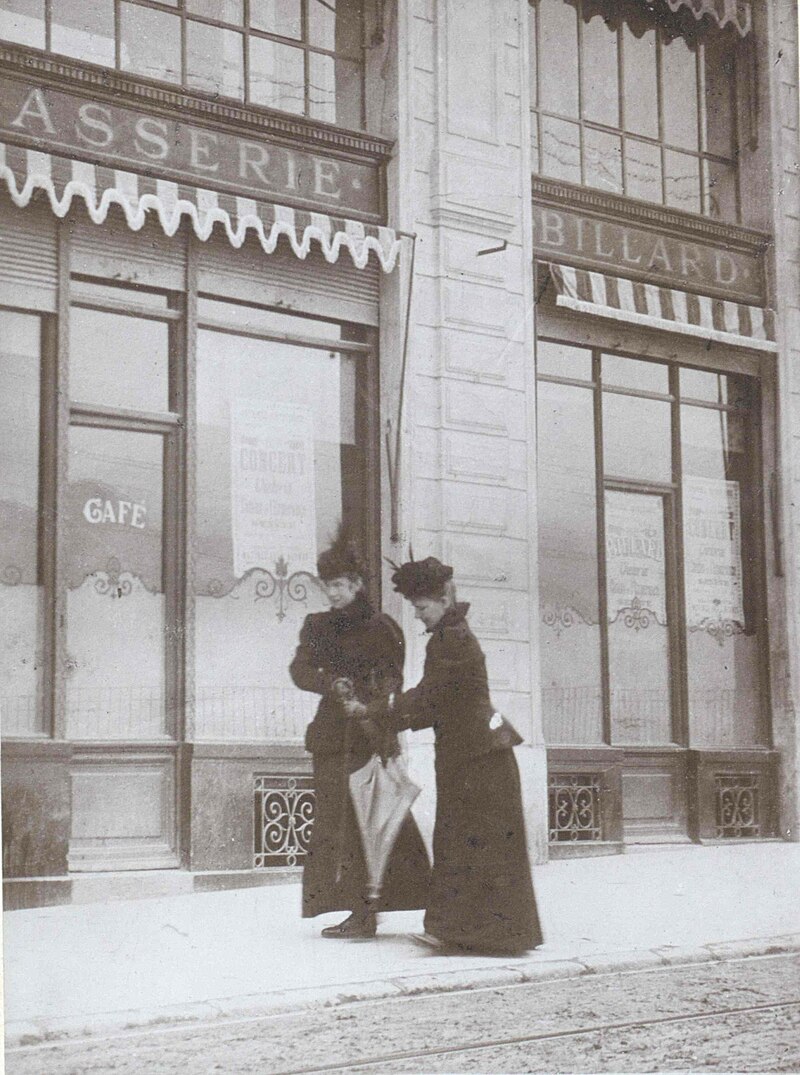
Last photograph of Sisi and her lady-in-waiting shortly before her death; Credit – Wikipedia
The next day, September 10, 1898, Sisi was due to take a ferry across Lake Geneva to the town of Territet. As Sisi and her lady-in-waiting were walking to the ferry’s landing, the Italian anarchist Luigi Lucheni rushed at her and stabbed her in the heart with a pointed file. The puncture wound was so small that it was initially not noticed and it was thought that Sisi had just been punched in the chest. Sisi thanked all the people who had rushed to help and conversed with her lady-in-waiting about the incident. Only when onboard the ferry did she finally collapse and then the severity of her wound came to light. The ferry captain ordered the ferry back to Geneva and Sisi was taken back to the hotel on an improvised stretcher. A doctor and a priest were summoned. The doctor confirmed that there was no hope and the priest administered the Last Rites. Sisi died without regaining consciousness.

The file that was used to stab Sisi on display at the Hofburg Palace; Credit – http://www.hofburg-wien.at
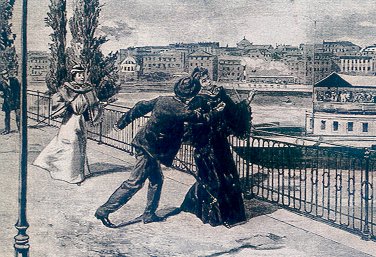
An artist’s rendition of the stabbing of Sisi by the Italian anarchist Luigi Lucheni; Credit – Wikipedia
Luigi Lucheni originally wanted to assassinate Prince Philippe, Duke of Orléans, but the duke had left Geneva earlier. He then selected Sisi as his victim when a Geneva newspaper revealed that the woman traveling under the pseudonym of “Countess of Hohenembs” was Empress Elisabeth of Austria. Lucheni was sentenced to life imprisonment, and in 1910 he hanged himself with his belt in his prison cell.
- Unofficial Royalty: Assassination of Empress Elisabeth of Austria
- Unofficial Royalty: A Visit to the Kaisergruft (Imperial Crypt) in Vienna
Franz Joseph never fully recovered from his wife’s death. Sisi was buried in Franz Josephs Gruft (Franz Joseph’s Crypt) in the Imperial Crypt in Vienna, Austria where her son Rudolf had been buried. When Franz Joseph died in 1916, his tomb was placed between the tombs of his wife and son.

Emperor Franz Joseph at Sisi’s coffin in the Imperial Crypt

Sisi’s tomb on the left, Franz Joseph’s tomb in the middle, Rudolf’s tomb on the right; Photo Credit – © Susan Flantzer
This article is the intellectual property of Unofficial Royalty and is NOT TO BE COPIED, EDITED, OR POSTED IN ANY FORM ON ANOTHER WEBSITE under any circumstances. It is permissible to use a link that directs to Unofficial Royalty.
Austria Resources at Unofficial Royalty














